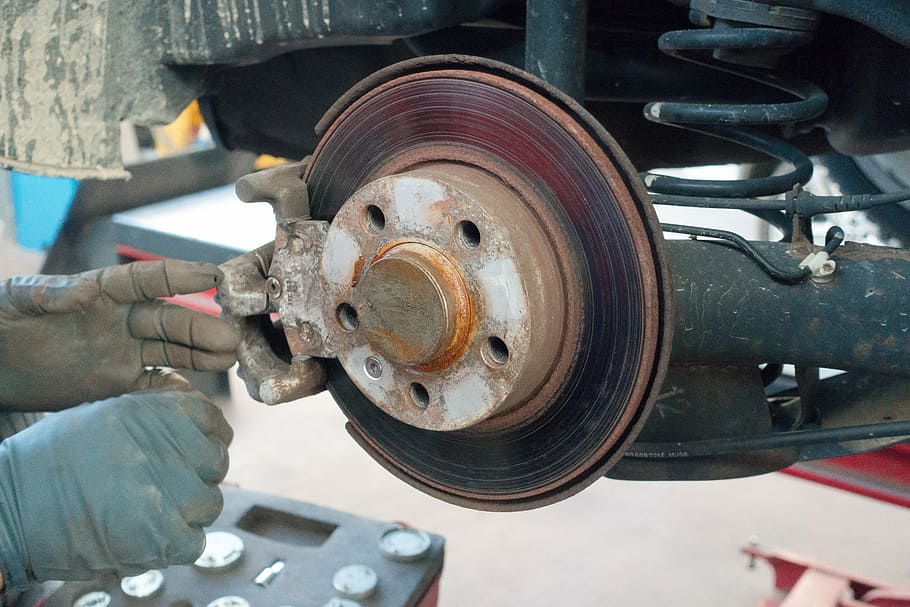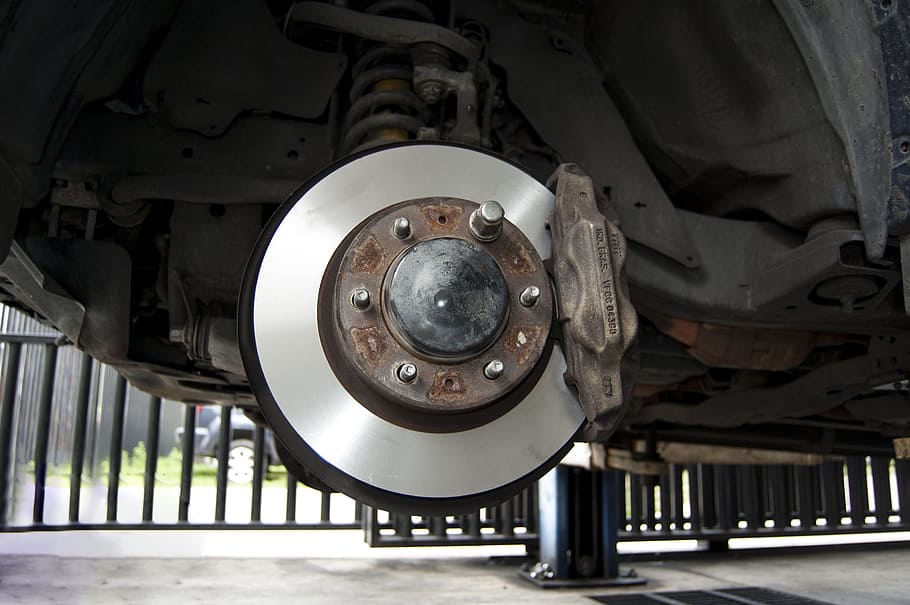The brake rotor is a vehicle component that wears down as the users keep using the brake pedal. The speed of deterioration depends on a lot of variables, including the type of brake pads (organic, semi-metallic, ceramic), quality of the materials, exposure to moisture and salt, speed of rotors cooling down, driving style, and more. For worn-out vehicle rotors, car owners usually have two options. It’s a dilemma for them to choose whether to resurface or replace rotors.
Contents
What Is a Brake Rotor and When to Resurface or Replace Rotors?
A brake rotor is a part of the disc brake system which is available in most contemporary car models. This heavy metal disc connects the wheel to the wheel hub. The rotor rotates as the wheel and tires spin. When the driver presses the brake pedal, the brake caliper squeezes the brake pads against the rotor sides. It creates friction that ultimately slows down and stops the car.
As time passes, the friction material of the brake pads wears away. It takes place even if the material is organic or semi-organic, and people regularly replace the brake pads. Similarly, rotors become thinner as they wear off with usages. Excessive heat also contributes to glazing and hot spots on the rotors. The habit of driving the car aggressively or at high speed will also lead to its wear. As the rotor quality has an impact on longevity, you need to service these by resurfacing rotors vs replacing.

What Is Resurfacing Rotors?
Whenever there is the occasion of the new brake pads installation, a technician also measures the thickness of the rotors to check if it meets the recommendation of the manufacturer. If yes, and there is enough material for resurfacing, the technician will remove the rotors by disassembling the brakes. Then, they will put the rotors on the brake lathe machine to remove excess metal to make them smooth again.
In earlier days, rotors had enough material thickness to endure multiple resurfacing events. But in today’s vehicle, the rotors are much lighter than they used to be. Therefore, rotor resurfacing is not quite as common as the yesteryears. However, if a rotor has sufficient thickness for resurfacing, people still perform it. With new machines such as on-car brake lathe, the resurfacing becomes more precise.
When to Resurface Rotors
Every time you replace the brake pads on the car, you have to evaluate whether to resurface or replace rotors. Ask a technician to assess the rotors for checking their eligibility for resurfacing. Both manufacturers and technicians recommend brake rotors resurfacing every time the car owners replace the vehicle brake pads. They make these suggestions only to make sure that the contact surface of the rotors will sync properly with the pads and result in smooth and safe braking of the cars.
The most crucial point about rotor resurfacing is the presence of sufficient thickness of the material in it. The brake lathe requires enough metal to remove and create a new surface on the rotor for proper grabbing of the brake pads.
Hence, technicians perform a visual inspection of the vehicle rotor for signs of damage. They also measure the amount of material on it to determine if there is sufficient substance for the machine. Rotors that have minimum thickness specifications can go through the resurfacing procedure.
SEE MORE
When to Replace Rotors
Nowadays, many manufacturers make rotors in thinner sizes to reduce weight. However, these rotors are less capable of dissipating heat and more prone to warp easily. They even have less material for resurfacing. Some manufacturers even suggest drivers not to resurface at all. Instead, they recommend replacing the pads as long as the rotor is healthy. When the rotors start to wear off, replace them with a new one.
Often, the rotor becomes too damaged or worn out to endure the resurfacing process. It may also have gone through resurfacing many times. If rotors have faced significant wear or damage or they do not have a minimum thickness, go for the replacement.
Even if some rotors have never undergone resurfacing, replacing is likely to be the more budget-friendly option. Many replacement rotors are available at a cheaper rate, and drivers find it easier to replace them rather than resurfacing them. Even technicians recommend dual rotor replacement that also helps car owners to save the time and expense of resurfacing.
Conclusion
Whenever you need to repair the car brake, ask the technician to inspect the brake system thoroughly to know if to resurface or replace rotors. If the rotors have enough material thickness and do not display any symptom of cracking or severe damage, the technician would ask you to resurface rotors. On the other hand, for the significantly damaged and excessively thinned rotors, they would recommend the replacement of the rotors.




Hi, I live in Tokyo area and found your blog to be very helpful. What is average cost to resurface rotors in Japan? Do you recommend a certain type of shop or specific chain stores? Are most tire shops and auto mechanic shops equipped to handle this type of task? Thanks.